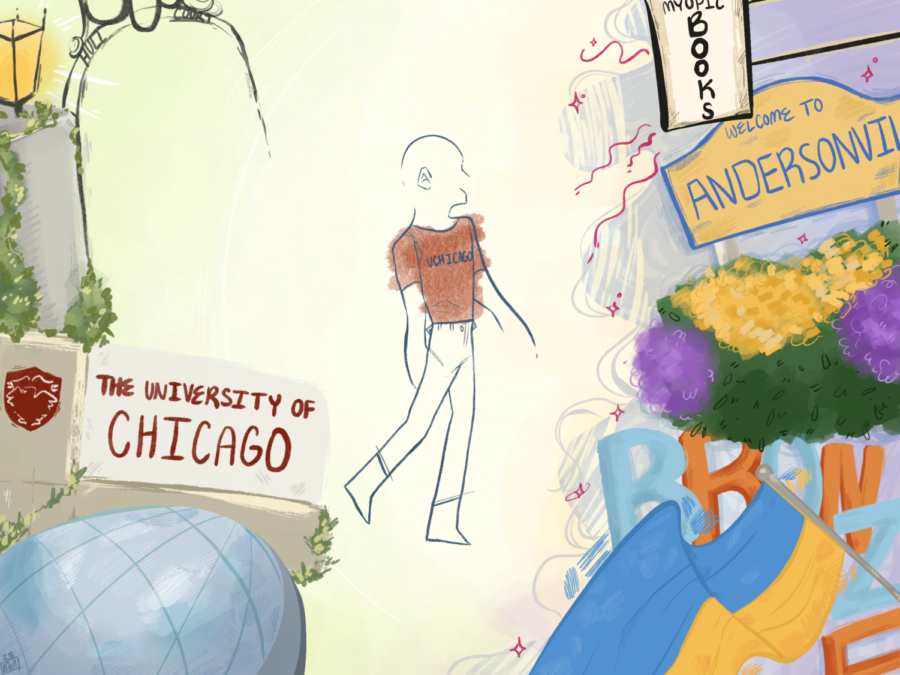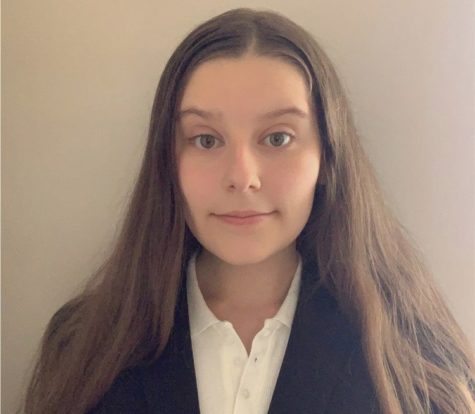Chicago Architecture Tour Guide of Four Years
To fully take advantage of your four years here, get off campus and explore everything Chicago has to offer.
In my humble opinion, Chicago is the greatest city in the world. For the past two years, I’ve welcomed international visitors to our incredible city by working as a tour guide on the Chicago River architecture boat tours with Shoreline Sightseeing. I can tell you the name, style, height, and history of almost every skyscraper along the river downtown. On my tour, I brag about Chicago’s amazing restaurants, over 600 beautiful parks, vibrant arts and music scene, world-class museums, theaters, seven professional sports teams, exciting nightlife, and diverse neighborhoods. Yet, on my tour, I also try to convey to visitors that the City of Chicago is so much more than just Navy Pier, the Mag Mile, and the Bean—we have over 200 neighborhoods that comprise the 77 community areas in the city, each with its own distinct food, architecture, history, people, and culture.
In my four years at UChicago, I’ve noticed that most students rarely leave Hyde Park except to go downtown a few times per quarter. We’re fortunate to go to school in a dynamic and exciting metropolis—yet many students seem to stay close to campus, and they’re missing out on all the fun! As I look back on my time here, I want to encourage current and future undergrads to make a concerted effort to leave campus as often as you can and explore neighborhoods across the city to broaden your worldview and truly take in everything Chicago has to offer.
In many ways, the University has a vested interest in making it more convenient for students to spend most of their time on campus. I get it—why leave Hyde Park when the neighborhood has everything you could ever need? There are great restaurants, organic grocery stores, museums, and parks within walking distance. Hyde Park is one of the most diverse neighborhoods in Chicago, and it’s easy to navigate on foot or by bike. College students are now required to live in on-campus dormitories for two years, and unlimited meal plans at the conveniently located campus dining halls give students little incentive to venture out to off-campus restaurants. While Hyde Park certainly has lots to enjoy, the city of Chicago has so much more to offer.
The biggest reason students should get out and explore is that our campus is not representative of all of Chicago. Campus is gloomy, stodgy, stoic, and gray. Hyde Park is considered one of the safer neighborhoods in the city, but fear of crime and the intense security apparatus of the UChicago Police Department make many students anxious. Though Chicago is beautiful in the summertime, we experience cold, harsh weather for most of the academic year, and many students (including me) experience seasonal affective disorder—the winter blues. There is little nightlife near campus, because most of the bars, dance halls, and jazz clubs along 53rd, 55th, and 63rd streets were demolished during UChicago’s urban renewal campaign in the ’60s. Even our main library, the Reg, is a blocky, brutalist, miserable mound of boring gray concrete.
I believe staying on campus for four years creates a false impression among students that all of Chicago is gloomy and gray–it’s not! There are so many interesting neighborhoods in our city, and here are some of my favorites:
Beginning on the North Side, Andersonville is a charming neighborhood located seven miles north of downtown. Known for its artisanal flair, beautiful architecture, and bustling shopping and dining district along Clark Street, Andersonville was recently called the “coolest neighborhood in the United States” by Time Out magazine. Andersonville was the historic center of Chicago’s Swedish community, so check out the Swedish American Museum (5211 North Clark Street) or Svea, a delicious Swedish diner (5236 North Clark Street).
Northwest of the Loop is Wicker Park, known for its vibrant arts scene and funky vibes. Along Milwaukee Avenue, you’ll find Chicago’s best selection of thrift and vintage clothing stores, along with famous music venues like Subterranean (2011 West North Avenue). If you’re into fitness, go for a walk, jog, or bike ride on The 606, a 2.7-mile-long path built on an elevated rail line similar to New York’s High Line.
East of Wicker Park is Lakeview, one of Chicago’s best neighborhoods for twenty somethings and one of the most popular neighborhoods in the U.S. on Zillow. Lakeview has great bars and restaurants along Broadway, Halsted, and Clark streets. Visit Laugh Factory comedy club (3175 North Broadway Street) for hilarious standup seven nights a week.
Moving over to the West Side, Ukrainian Village is the historic center of Chicago’s Ukrainian community and offers great restaurants, cafés, and culture. Visit the Ukrainian National Museum, then go next door to the Saints Volodymyr and Olha Ukrainian Catholic Church (739 North Oakley Boulevard) to view the beautiful golden domes and intricate mosaic on the exterior. Tryzub, a Ukrainian restaurant at 2201 West Chicago Avenue, is one of my all-time favorite restaurants. Chicago is sister cities with Kyiv, and many local shops and restaurants are collecting donations to support the Ukrainian resistance to Russia’s invasion.
A few miles south of Ukrainian Village is Pilsen, a historically Latino neighborhood that Forbes named one of “the 12 coolest neighborhoods around the world.” Along Pilsen’s main drag on 18th Street, you’ll find Quesabirria Jalisco (1314 West 18th Street), one of Chicago’s best spots for birria tacos, and Cantón Regio (1510 West 18th Street), one of my favorite places for juicy grilled steak. Thalia Hall (1807 South Allport Street) is a historic music venue hosting up-and-coming acts. Pilsen is also famous for its colorful street art, and for the acclaimed (and free) National Museum of Mexican Art (1852 West 19th Street).
Heading down to the South Side, I’d recommend Bronzeville, northwest of Hyde Park. Bronzeville is known as Chicago’s Black Metropolis, and numerous Black visionaries have lived there, including civil rights activist Ida B. Wells, poet Gwendolyn Brooks, and musicians Sam Cooke and Louis Armstrong. Today, Bronzeville is known for its historic churches and beautiful homes along Martin Luther King Jr. Drive, great restaurants like Yassa (3511 South King Drive) and Peach’s (4652 South King Drive), and The . Students over 21 can visit Bronzeville Winery (4420 South Cottage Grove Avenue), the restaurant, winery, and gathering space owned by Eric Williams, proprietor of Hyde Park’s Silver Room. Nearby, in Bridgeport, check out a Chicago White Sox baseball game at Guaranteed Rate Field (333 West 35th Street), though real Chicagoans still call it Comiskey Park.
I challenge the widespread notion—one built on racial stereotypes—that UChicago students shouldn’t venture far south of the Midway. Daytime visits to neighborhoods south and west of Hyde Park are totally safe and can be really fun if you open your mind to the fact that every neighborhood in Chicago has something to offer. I advise students to be conscious of your presence in South and West side neighborhoods; be aware of your surroundings and try to be perceptive about Chicago’s long and fraught history of redlining, systemic racism, and unequal economic opportunity. And be sure to shop at local businesses.
In Woodlawn, just a short walking distance from campus, you’ll find Daley’s Restaurant (6257 South Cottage Grove Avenue) a delicious and affordable American diner. It’s the oldest continuously operating restaurant in Chicago, founded in 1892 by construction worker John Daley (no relation to former Chicago Mayor Richard Daley), and they’ve been serving breakfast and lunch to South Siders and visitors for over 130 years. Also check out Robust Coffee Lounge (6300 South Woodlawn Avenue) and go to the Oak Woods Cemetery (1035 East 67th Street) to see the gravesites of Olympic track star Jesse Owens, UChicago economist Gary Becker, and Chicago’s first Black mayor Harold Washington.
About a mile west of Woodlawn is Englewood, where you’ll find coffee shops like Kusanya Café (825 West 69th Street) and Momentum Coffee (1122 West 63rd Street) which has a cool barbershop and coworking space attached. To learn more about pertinent social issues facing the neighborhood, talk to shoppers at the soon-to-open Save-a-Lot grocery store (832 West 63rd Street) and, shameless self-promo, read my article in The Gate entitled “Save-A-Lot Opens in Englewood Amid Community Backlash.”
Heading southeast from Englewood, visit the historic South Shore Cultural Center (7059 South South Shore Drive), a beautiful ballroom where the Obamas had their wedding reception, and the adjacent South Shore Nature Sanctuary for a tranquil respite from the bustling city. Then go a few more miles south to Birrieria Ocotlan (8726 South Commercial Avenue) for mouth-watering birria tacos, and also check out Calumet Fisheries (3259 East 95th Street), a famous smoked fish spot where Vice President Kamala Harris dined when she visited Chicago in January.
There’s so much to see and do in neighborhoods outside of downtown—and I believe it’s essential for UChicago students to explore the entire city—North, South, and West Sides— during our four years here.
Yet I understand why it’s hard to leave Hyde Park. The relentless pace of the quarter system and UChicago’s interminable academic grind make it difficult to carve out time to explore. We’re constantly studying for the next midterm, applying for internships, and doing tomorrow’s Sosc reading. Students should, however, make time in their schedule to explore Chicago, just like they make time for IM sports, RSOs, video games, or scrolling on Instagram. Visiting neighborhoods besides Hyde Park and downtown will open your eyes to the beautiful complexity of this city, and the experience will be more valuable for your personal growth and development than reading Sidechat or playing Fortnite.
Navigating the city by train or bus can be difficult, and the lack of transportation options is one of the main reasons my friends say they don’t leave Hyde Park more often. There are legitimate concerns about safety on the CTA, and many students (myself included) are wary about riding the El trains after Max Lewis, a second-year student, was fatally struck by a stray bullet on the Green Line in July 2021. However, crime on the CTA is exceedingly rare—I’ve taken CTA trains and buses many times in the past four years, and I’ve never experienced violent crime. Furthermore, Metra, Divvy Bikes, and ridesharing apps like Uber are also good alternatives to the CTA. Metra tickets from Hyde Park to downtown are just two dollars, and though it runs less frequently, I’ve found Metra to be safer and more reliable than the CTA. Most students don’t realize that we are eligible for Divvy’s Divvy for Everyone program, which offers a five dollars annual membership to local college students. Splitting an Uber to the North Side with a few friends typically costs less than five dollars per person depending on the time of day.
The University has done a lot to help students get out of Hyde Park using public transit, from the U-Pass Ventra cards to the new downtown campus connector shuttle to a once-yearly ten-ride pass on the Metra. The Chicago Studies program helps students connect to the city, and they post a weekly events digest on their Instagram. However, there’s much more that UChicago could do to help students get to neighborhoods outside of downtown: creating a new shuttle route that takes people to neighborhoods north and west of the Loop or giving students 10 Metra rides each quarter instead of each calendar year.
Give Chicago a chance! We have a short time here, and it’s a mistake to spend your entire College experience on a dreary campus that doesn’t give the full picture of everything Chicago has to offer. Get out there and explore!
Adam Sachs is a fourth-year in the College.












